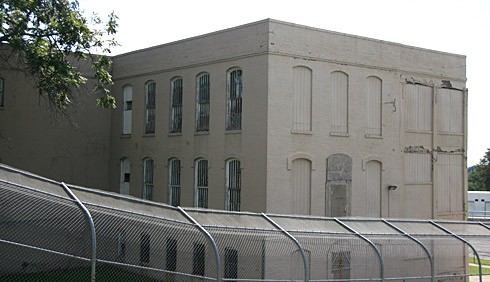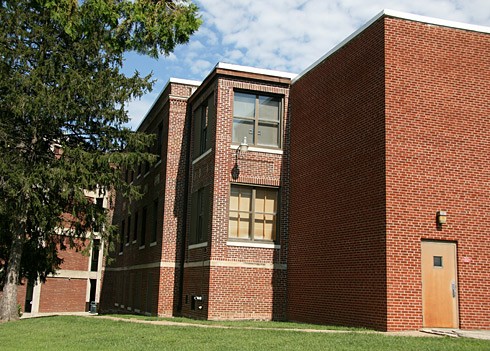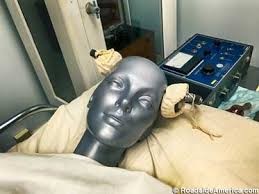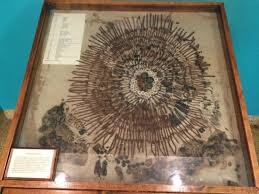Glore Psychiatric Museum
Introduction
Text-to-speech Audio
Images
Outside of the prison by Glore Psychiatric Museum

Outside of Glore Psychiatric Museum

Model of Electroshock therapy at Glore Psychiatric Museum

Remnant of someones stomach after eating a lot of nails

Backstory and Context
Text-to-speech Audio
This facility originally began as the State Lunatic Asylum No. 2. This hospital was part of the Kirkbride Plan, a series of identical hospitals all over the nation that housed the insane, criminally or otherwise. The State Lunatic Asylum no. 2 opened in 1874 and was initially able to house 25 patients. Soon afterwards it expanded to house 250 patients. By the 1950s, it had grown to house 3000 occupants; during this time its name changed to the St. Joseph State Hospital.
In 1966, an employee of the Missouri Department of Mental Health, George Glore, made replicas of many tools used for treatments in the 17th, 18th, and 19th centuries. What sparked the creation of these tools, was his desire to celebrate Mental Health Awareness Week. These collections of tools formed the basis for the Glore Psychiatric Museum, which was established the following year in 1967.
The Glore Psychiatric Museum tells a story of how America was concerned with public mental health, but unable to adequately treat it. The exhibits explore how mental health treatment has evolved over the years. Many treatments used on patients would be considered unethical by today’s standards, such as isolation chambers, and inducing patients into diabetic comas.
Sources
Glore Psychiatric Museum , Glore Psychiatric Museum | St. Joseph Museums. Accessed October 16th 2019. https://www.stjosephmuseum.org/glore-psychiatric-museum.
Keil, Sherril, and Dave Alexander. “Glore Psychiatric Museum in St. Joseph.” Legends of America, https://www.legendsofamerica.com/mo-psychiatricmuseum/
“Kirkbride Buildings - Historic Insane Asylum History.” Kirkbride Buildings History, http://www.kirkbridebuildings.com/about/history.html.
Gauthier, Jason. “Glore Psychiatric Museum - History - U.S. Census Bureau.” Glore Psychiatric Museum - History - U.S. Census Bureau, https://www.census.gov/history/www/reference/datamuseums/glore_psychiatric_museum.html.
https://ghost.hauntedhouses.com/missouri_saint_joseph_glore_psychiatric_museum
https://ghost.hauntedhouses.com/missouri_saint_joseph_glore_psychiatric_museum
https://www.roadsideamerica.com/story/2142
https://www.tripadvisor.com/LocationPhotoDirectLink-g44880-d208669-i131911150-Glore_Psychiatric_Museum-Saint_Joseph_Missouri.html
